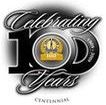Preamble
Wetlands are vital parts of the hydrological cycle, highly productive, support exceptionally large biological diversity and provide a wide range of ecosystem services, such as food and fibre; waste assimilation; water purification; flood mitigation; erosion control; groundwater recharge; microclimate regulation; enhance aesthetics of the landscape; support many significant recreational, social and cultural activities, besides being a part of our cultural heritage. In this context, the Brain Storming Session focused on the current trends in aquatic ecosystem conservation, restoration and management including the hydrological and the biophysical aspects, peoples’ participation and the role of non-governmental, educational and governmental organisations and future research needs for the restoration, conservation and management. It was acknowledged that most of urban wetlands are seriouslythreatened by conversion to non wetland purposes, encroachment of drainage, through landfill, pollution (discharge of domestic and industrial effluents, disposal of solid wastes), hydrological alterations (water withdrawal and inflow changes), and over-exploitation of their natural resources resulting in loss of biodiversity and disruption in goods and services provided by wetlands. This report compiles the strategies for conservation and sustainable management of urban wetlands based on the discussions during the Brain storming session (26th September 2009) and recommendations of Lake Symposiums (Lake 2008, Lake 2006, Lake 2004, Lake 2002, LimGIS 2001, Lake 2000, 1998 symposium). Annexure II documents the draft notification of the Regulatory Framework for Wetlands Conservation of The Ministry of Environment and Forests, Government of India apart from various legal instruments that are relevant for the conservation and management of wetland ecosystems. We hope that the strategies suggested in this report based on the interactions with all stakeholders during the last decade (1998-2009) will play a catalytic role in activating the Policy Makers of this country towards appropriate policy framework to conserve, restore and manage our fragile ecosystems. |
|




